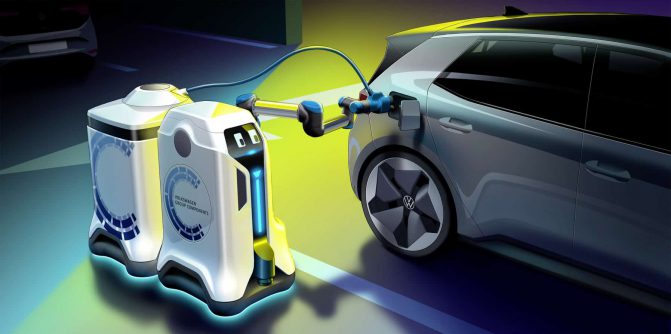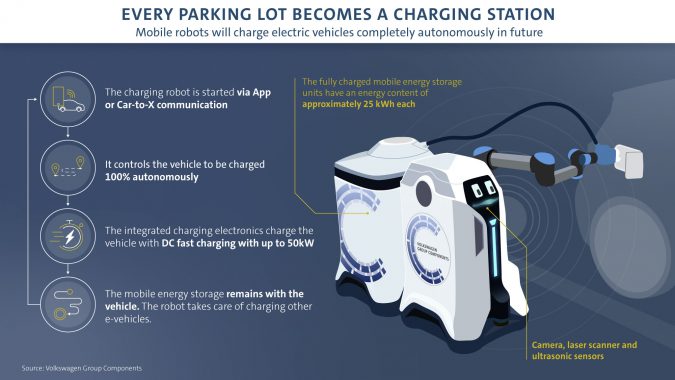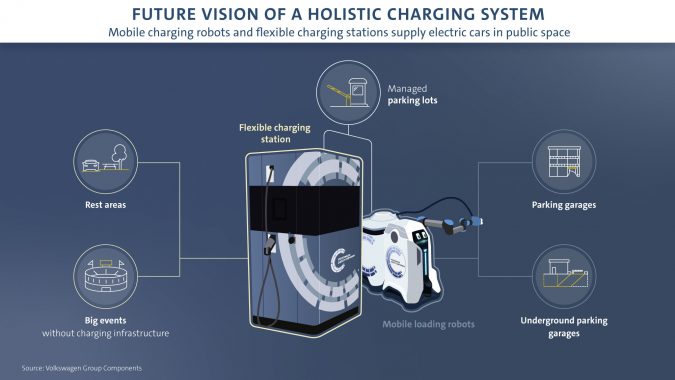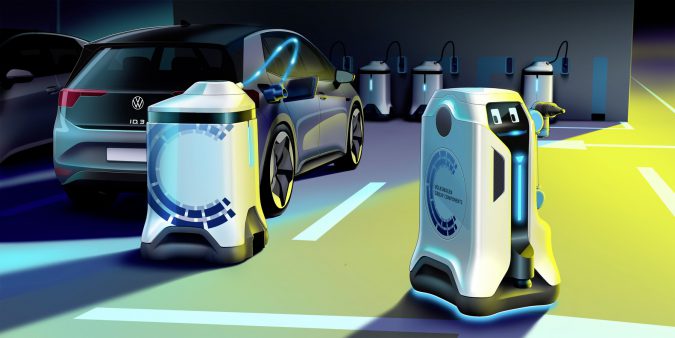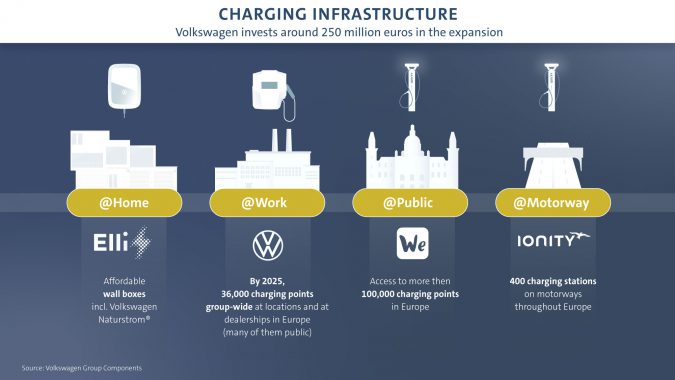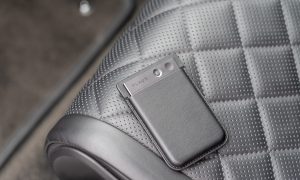Volkswagen are pushing the boundaries of charging technology with a prototype charging robot, capable of driving to your car and charging it completely autonomously.
The idea first came to fruition as a way to combat the struggle of searching for a charging station, a major deterrent for many potential electric vehicle buyers.
How It Works
After being activated either via app or V2X communication, the robot drives itself to the vehicle and begins charging it. The entire process from opening the charging socket flap, to connecting the plug, and eventually disconnecting it, is all carried out without any human input.
The robot will tow a small trailer carrying a mobile energy storage device (also known as a battery wagon) to the vehicle and connect them which will then begin charging the EV.
While this is happening, the robot will disconnect from the battery wagon and begin charging other electric vehicles in the area.
Once the charging process is completed, the robot will return, reattach the battery wagon, and bring it back to a charging station.
Mark Möller, Head of Development at Volkswagen Group Components stated; “The mobile charging robot will spark a revolution when it comes to charging in different parking facilities, such as multi-storey car parks, parking spaces and underground car parks because we bring the charging infrastructure to the car and not the other way around. With this, we are making almost every car park electric, without any complex individual infrastructural measures. It’s a visionary prototype, which can be made into reality quite quickly, if the general conditions are right.”
The Robot
The unit consists of a compact charging robot and a battery wagon. At a full charge they will carry 25 kWh each (for reference a full charge for a Tesla Model 3 is between 50 and 75 kWh) and a single robot can tow several battery wagons at once.
The charging robot is fitted with cameras, laser scanners, and ultrasonic sensors – the combination of these systems allow the robot to carry out the charging process autonomously, and navigate the parking area without colliding with any obstacles.
The compact design of the charging robot, alongside its ability to roam around an area without being fixed to a single point, is perfectly suited for use in restricted parking areas without established charging infrastructures, such as underground car parks.
“This approach has an enormous economic potential”, says Möller. “The constructional work as well as the costs for the assembly of the charging infrastructure can be reduced considerably through the use of the robots.”
Möller continues: “Even the well-known problem of a charging station being blocked by another vehicle will no longer exist with our concept. You simply choose any parking space as usual. You can leave the rest to our electronic helper.”
Volkswagen’s Greener Future
In collaboration with their dealer network, Volkswagen are installing a total of 36,000 charging points throughout Europe by 2025 with the majority of these being publicly available.
This is all part of their larger goal to encourage more road users to switch to electric transportation.
Alongside these projects they are launching a charging unit for home use in the form of a wall box called the ‘ID.Charger’, and installing 400 fast-charging parks on major European highways.
The goal is for EV charging to be as simple and convenient as charging your smartphone.
As it is still in the prototype stage of production, a possible date for the market launch of the charging robot has not been set.

